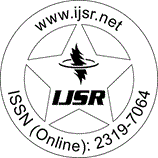Downloads: 16
India | Arts and Humanities | Volume 14 Issue 2, February 2025 | Pages: 1792 - 1800
A Study of Minor Forest Produce Marketing by Scheduled Tribes Profits for Sustainable Development Kodagu in Karnataka
Abstract: The Present Paper has made an attempt to examine the way of gathering Minor Forest Produce by forest tribal communities minor forest area availability in the Coorg region of Karnataka state. The minor forest products can be marketed by setting up of stalls in the tourist spots, resorts, etc. The non-wood forest products constructed by the tribal people are termed as Minor Forest Produce. The Minor Forest Products collected by the tribal persons will be marketed through this mobile unit, . (Tribal Co-operative Societies), and decentralized marketing initiatives. It is aimed at ensuring best prices for these products and helping the community get empowered economically. The majority of the tribal population of the district are either leaving within the forests or in resettled areas. Around of them are still dependent on the forest substantially for their livelihoods minor forest products are the livelihood for thousands of families. Altogether, the collection of all the available MFPs generated 66 days of employment per households., The local people to depend completely on the forest ecosystem for their daily needs. Collections and sell of different non-timber forest products (NTFPs) for domestic and commercial purposes are considered as important means of their livelihood. The tribal people seasonally collect various NTFPs to satisfy the needs for their food, fodder and also medicine. The Minor Forest Products are mainly sold by women across the country Mechanism for Marketing of Minor Forest Produce Through Minimum Support Price (and Development of Value Chain for MFP provide MSP to gatherers of forest produces. The schemes ensure the sustainability of the resource base by addressing the problems that tribals face such as perishable nature of the produce, lack of holding capacity, lack of marketing infrastructure, exploitation by middlemen, etc. The present study tries to explore the importance of NTFPs on livelihood of the tribal people in the forest fringe areas. The reports and Co-operative societies visited were done with for data collection. The nature and pattern of NTFP utilization by the tribal people for domestic and commercial uses have been estimated indirectly. Result reveals that Coorg Honey and dalchinna are the most important NTFPs which contribute significantly to the tribal livelihood. Hence, conservation of these forest products is to be given priority in forest management. Strategically, on the basis of information thus collected form visited in NTFP resources obtained in the local Lichens, Honey with Bees-wax, Shikakai, Antaval Nellikai, Arishina, Dalchinni, Murugal, Uppage and Alalekai dominated forest ecosystem have been ranked according to their importance in tribal livelihood. Such importance has been assessed in terms of monetary value, volume of collection, availability and uses. The MFPs about 3 LAMPS in profit include sustainable provide employment and income Madikeri, Virajpet, and Somavarapete taluks. Because the study is descriptive and analytical in nature.
Keywords: Non-Timber Forest Produce Marketing and Income
How to Cite?: Dr. Srikantah Nayaka G, "A Study of Minor Forest Produce Marketing by Scheduled Tribes Profits for Sustainable Development Kodagu in Karnataka", Volume 14 Issue 2, February 2025, International Journal of Science and Research (IJSR), Pages: 1792-1800, https://www.ijsr.net/getabstract.php?paperid=SR25211155308, DOI: https://dx.doi.org/10.21275/SR25211155308
